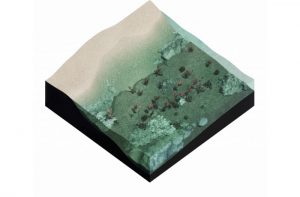Practical Applications
On the right a couple of cases is presented providing some application experiences that can be used as inspiration for future designs.
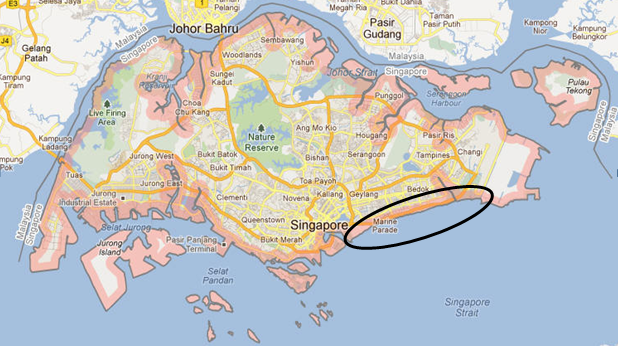
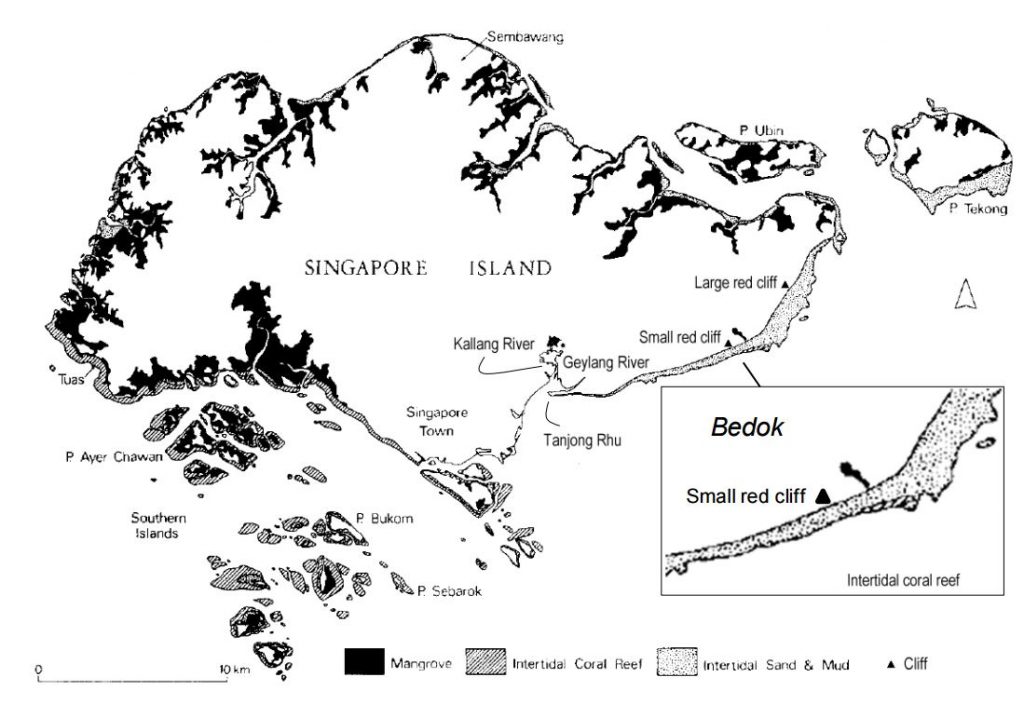
In this section, a practical application is shown in which the above theory is applied to a real-life situation. The study area for this application is East Coast Park (ECP), a recreational coastal park in Singapore (see the top figure above). The whole park is located on reclaimed land which is subject to coastal retreat since reclamation in the 1970s. Numerous hard structures, mainly headland breakwaters, were constructed at ECP to combat these erosion problems.
There is an opportunity for a Building with Nature (BwN) approach to mitigate erosion at ECP in combination with the opportunity to enhance biodiversity in the area. Currently, ecosystems like coral reefs, seagrass meadows, oyster reefs or mangrove forests are rare or completely absent at ECP, although they may have naturally occured there. With a BwN design a suitable habitat for these ecosystems can be created or restored. Another advantage of a BwN design over traditional hard structures is that natural systems can grow with relative sea level rise. A BwN design may present challenges, for instance, creating habitats for undesired species. An example is the concern of the creation of still water pools which may attract mosquitoes. With a balanced and well thought-out design, these issues can be mitigated or prevented.
Corals are found to a limited extent on the ECP shoreline and further east, at locations where a hard substratum is present. Near the Tanah Merah ferry terminal, for instance, coral occurs at the seaward side of the shore-parallel breakwater. Also near headland breakwaters some corals are found. This blogspot shows pictures of corals at ECP, young colonies with soft and hard corals. The hard corals found at ECP are probably better adapted to low salinities and low light levels. Corals require hard substratum for attachment. At ECP, most hard substratum is formed by breakwaters, since the reclaimed coastline consists of sand and the original deposits are clayey. The breakwaters, however, have their toe at the low water line, which limits the space for coral growth, since corals need to be submerged most of the time. In the past, prior to the reclamation works, intertidal corals were found at the rocky cliffs near the ECP coastline (Hilton & Manning, 1995). This is a first indication that coral establishment at ECP may be possible, but that the habitat has become less favourable over time. The possibilities and limitations for coral growth at ECP are explored using the determination flowchart.
Fill in determination flowchart
Following the determination flowchart the aim is to determine the reason for poor presence of corals at ECP and how this situation can be improved. The goal is to give an indication if corals can be considered as ecosystem engineers in a BwN design for ECP. So far no detailed design for ECP has been decided on, which provides the opportunity to adapt the design in such a way that an optimal habitat for corals is created. Later on in the design process, the possibilities for adaptation of the design will decrease as more aspects of the design have become final and cannot be changed anymore. Still, the possibility to incorporate coral in the final design can be considered (using the flowchart).
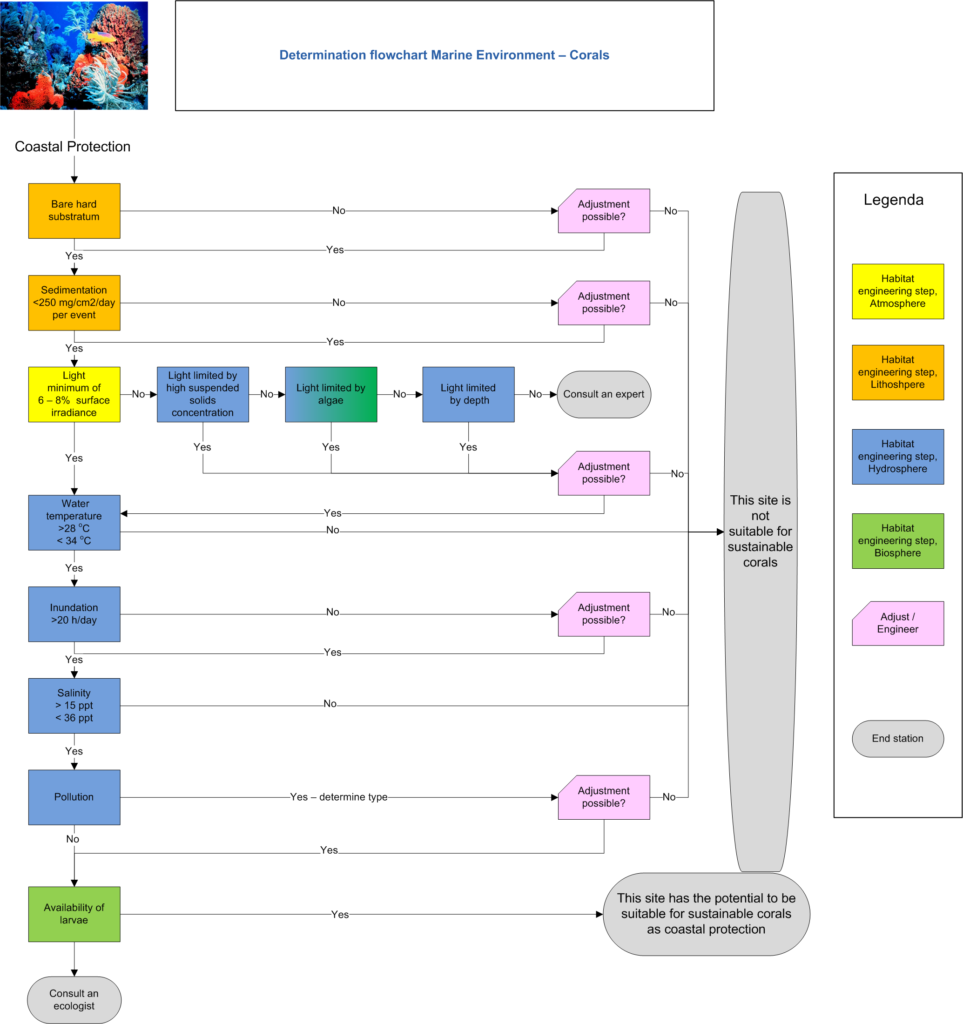
For each parameter in the determination flowchart, site-specific information is needed. Sources of information that can be considered to obtain site-specific values for these parameters are, for instance:
• Current state of the ecosystem at the site (occurrence of species / health of species)
• Available literature
• Computational modelling
• Data collection (measurements/field work)
The sequence in this list represents a hierarchy, in that the amount of effort needed to obtain information from the specific source usually increases from top to bottom. Yet, the effort can vary significantly due to knowledge on the site, circumstances on site, availability of measurement instruments, etc.
In the following section, the determination flowchart is discussed from top to bottom to give the rationale behind each habitat requirement.
Bare hard substratum – Coral needs hard substratum for attachment. The substratum must be free from sediment and other loose material, and also from precolonising organisms such as macroalgae and sponges, which can exclude coral settlement. At ECP, the presence of hard substratum is poor. The available hard substratum is mainly intertidal, which is not in line with the preferred inundation levels. Much of the hard substratum in the lower intertidal is colonised by several types of macroalgae and filamentous algae (e.g. Enteromorpha) and encrusting sessile animals such as barnacles (Lee et al. 2009). Sponges were absent on the breakwaters, probably due to unsuitable inundation regimes (Lee et al. 2009). At some locations corals do settle at ECP, which indicates that precolonising is probably not a major problem. In sum, hard substratum is not abundantly present at ECP, which limits coral settlement.
Sedimentation – Corals can withstand occasional sedimentation as result of an event (e.g. a storm) of 250 mg/cm2/day. Some coral species have special techniques to free themselves from sedimentation. If the sediment cover is too thick or remains on the corals permanently, no photosynthesis can take place and the corals start to bleach. In an environment with waves, resuspension and subsequent settlement of sediment on corals may occur at shorter time intervals. More information is needed to check whether this would prevent coral establishment at ECP. Sedimentation of eroded beach sediment and sedimentation of fines from the drains at ECP might cause a problem. Concluding, if corals are placed at a location where wave-induced sediment transport takes place, the stress they experience from settlement and resuspension of sediment has to be investigated. During the design phase, the (changes in) sedimentation and erosion patterns caused by the new coastal protection scheme should be elaborated.
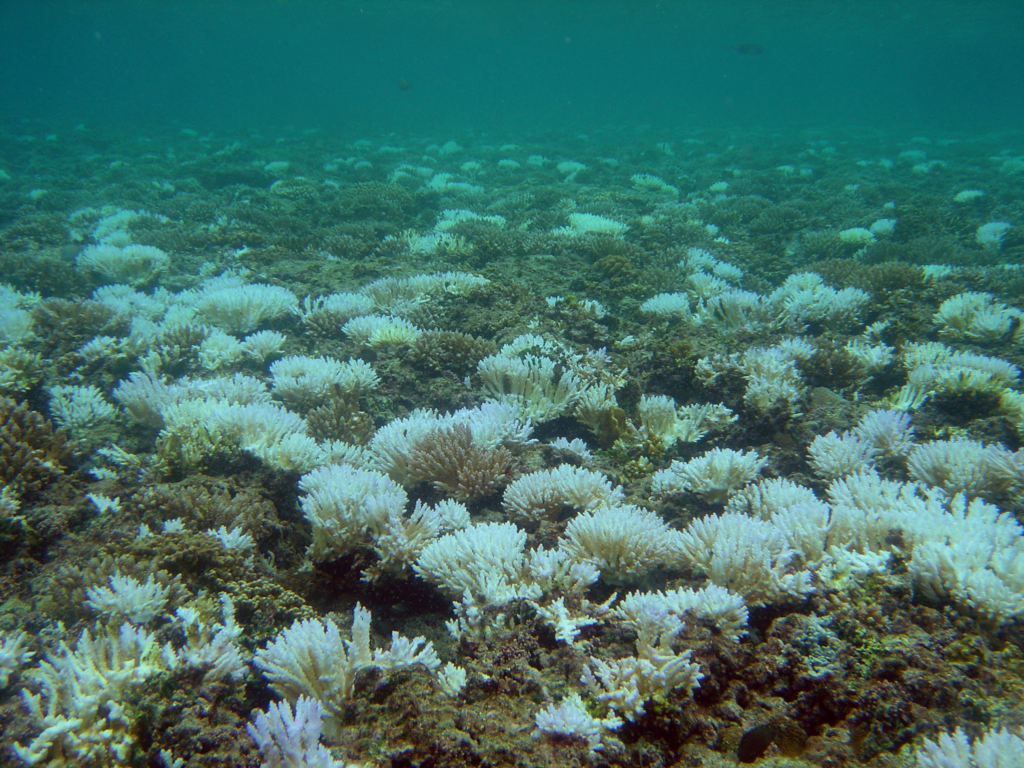
Light – At least 6-8% of the surface irradiance is needed for the zooxanthellae to photosynthesize and provide the corals with sufficient food and energy. When light penetration is not sufficient, the cause for light attenuation in the water column can be investigated. This can be due to a high suspended solids concentration or a phytoplankton bloom. If this light attenuation cannot be mitigated, offering hard substratum at shallower water depth might be a solution, although this will require (re-)analyses of temperature and inundation regimes. At ECP, turbidity might be a problem. Coastal erosion brings sediment into suspension and turbidity levels can be high. In addition, several drains discharge at the shoreline, which might increase nutrient availability. The latter may promote phytoplankton growth, increasing not only turbidity, but also competition for light. More information and research is needed to judge what light level is available at ECP at different water depths. In sum, light might be a limiting factor for coral growth at ECP, but more research is needed for firm conclusions.
Water temperature – Optimal water temperature for coral growth is between 28 and 34 degrees Celcius. In the tropics, too high temperatures may be a problem in semi-enclosed basins with long retention times. In the coastal waters of Singapore corals occur and ECP is a coastal area with short retention times. Hence water temperatures at ECP are assumed to be suitable, although the actual temperature regimes arising from the design ought to be considered.
Submergence/Inundation – Intertidal corals do exist, but submergence times must be relatively long. This means that corals need to be submerged at least 20 hours/day. In the current situation at ECP, hard substratum is offered with too infrequent and too short durations of submergence. This is a bottleneck for coral establishment and expansion. For an BwN design including corals as ecosystem engineers, hard substratum should be placed at greater water depths with more regular and extended periods of inundation, provided that light levels are high enough. At this moment the major part of the hard substratum at ECP is located in the intertidal zone, with too infrequent and too short durations of inundation. This hampers coral establishment, growth and persistence.
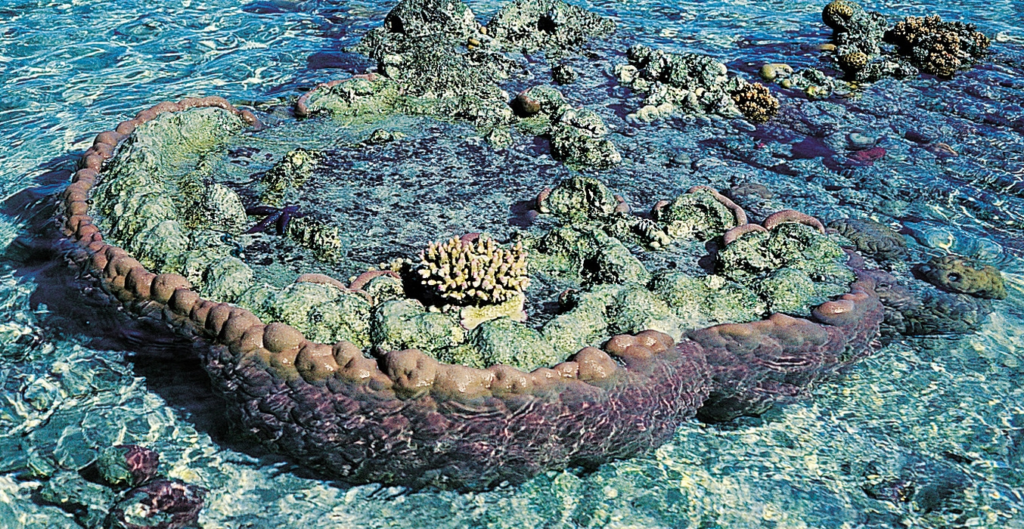
Salinity – Corals need a salinity higher than 15 ppt. For Singapore an upper limit of 36 ppt is advised, as higher salinity levels affect physiology and reproduction. The salinity levels at ECP are not known in detail. Fresh water from the sewage system is filtered and released into the sea at Changi (5 km from the water line at the bed). Also the drains, discharging at the ECP coastline can (periodically) decrease the salinity. It is assumed that the freshwater discharges are mixed and spread in such a way that salinity levels at ECP do not drop below 15 ppt. Hence salinity at ECP is probably not outside the required range.
Pollution – There are no indications that the waters at ECP are polluted. Yet, the proximity of major commercial ship anchorage areas raises the risk of pollution from ship-based sources. The most likely pollutants are oil and toxins from antifouling paints. Additional potential sources include nutrients and sediments from drain discharges and human activity from recreational users of the park. More information is needed to eliminate pollution as a threat for coral reefs.
Availability of larvae – Availability of larvae will enable natural recruitment of corals. Absence of larvae at the site will require introduction of larvae. Larvae availability is dependent on the distance to other corals and on currents that can deliver larvae at the project area. Since corals occur at ECP, larvae availability is not a problem.
Conclusions
The reasons for limited coral presence at ECP is probably a combination of a lack of hard substratum with suitable submergence conditions. The hard substratum present is located high in the intertidal zone, with relatively long emergence periods. Another issue may be the light availability. This may become increasingly important if a BwN design is pursued which aims at coral growth at deeper water. Water temperature, salinity and availability of larvae seem suitable. Further steps towards the BwN design should clarify whether sedimentation is an issue. This initial assessment indicates that coral growth at ECP is possible, if the presently unfulfilled habitat requirements are engineered.
Next steps in developing a BwN for ECP including corals would be:
- Determine the water depth range which meets the habitat requirement for submergence times and light availability for corals at ECP. Offering hard substratum at a greater water depth will meet the requirement for submergence, but may come with too little light availability.
- Investigate the stress caused by sedimentation and resuspension of sediments at ECP.
- Investigate and quantify potential pollutant sources.

